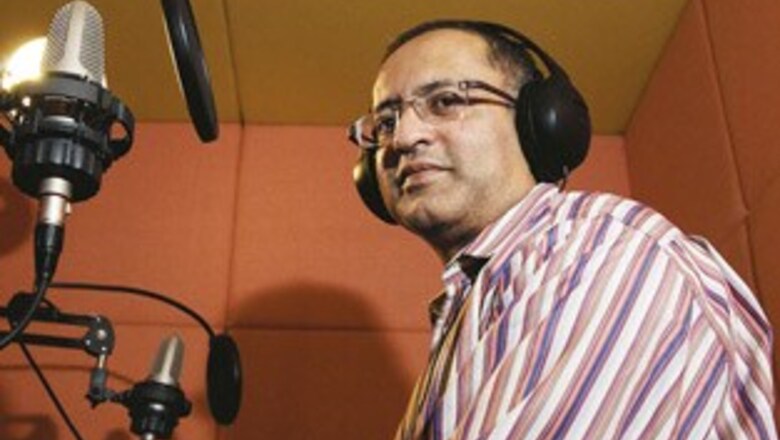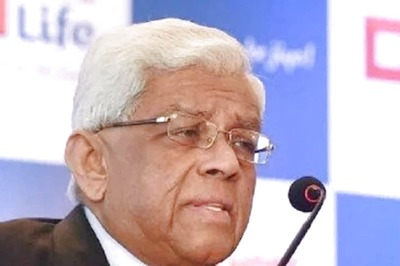
views
Imagine calling your wife on her mobile phone and being greeted not with a ringtone, but with an ad that reminds you that her birthday falls in two days, and that you can get a 15 percent off on her favourite flowers at the local florist.
According to Bangalore-based mobile value-added services (VAS) company, OnMobile, such ads could add up to a multi-million dollar ad market among Indian mobile users. And it’s no minnow in that space. In the last four years OnMobile has grown its revenue nearly 10-fold to Rs 406 crore, making it the largest of its kind in India. Every mobile operator in India is its customer. And its annual operating margins are above 30 percent in an industry where profits are paper thin and entrepreneurs dime-a-dozen.
Under its CEO Arvind Rao, who cut his teeth on both sides of the confidence-selling game, as a consultant with McKinsey and then as a venture capitalist and private equity investor, OnMobile is now positioning itself as the de-facto operator of this new advertising system.
The operator’s VAS backbone
OnMobile’s product solutions for mobile operators like Vodafone, Reliance and Airtel are a combination of computer hardware and software programs installed within their premises. Compare the mobile VAS industry to the oil and gas one and OnMobile’s platform is a grid of pipelines that carry various types of VAS services--ringtones, alerts, cricket updates--from the creators to the end consumers.
The operators pay OnMobile a monthly subscription fee that is relative to the actual value of VAS services bought by their users. On an average, OnMobile gets around 25 percent of the value of any VAS service for carrying it around. And because its services are “white label”, or without a brand, mobile operators are free to stick their own brands before offering them to subscribers. So, mobile operators don’t see OnMobile as a future competitor.
Moreover, OnMobile cannily offers its solution together with a bunch of ready-to-sell VAS goodies--caller tones, missed-call alerts and stock updates. It’s like a gas company that not only lays its pipeline to your stove but also guarantees to provide most of the gas you’ll need.
Over time, operators got so used to this model that they gave up major innovations within VAS themselves, a gap that OnMobile smartly addressed. “For an operator to replace us would be like going in for an open heart surgery,” says Rao.
That’s a mighty claim. Does that mean operators have in effect ceded the space for innovation to OnMobile? Rao parries the question, saying operators “have things like tower infrastructure, spectrum and expansion to think of.”
Colleague and Chief Technology Officer Mouli Raman offers another defence. “We are just like the arms merchants in this game, but it’s the operators that are fighting the war.”
Milking the caller tune wave
Advisory firm BDA estimates the Indian VAS market will grow from $1.5 billion in 2008 to $7.8 billion by 2013. But over half of that are SMS revenues. BDA figures that of the remaining, over 55 percent is made up by just one product--the ubiquitous caller tune, the music you hear when you
call someone. The caller tune is to OnMobile what search is to Google.
By innovating aggressively around caller tunes, OnMobile has ensured that subscribers are more likely to sign up (leading to a monthly fee), find newer songs of interest and change their songs more often.
PAGE_BREAK
OnMobile’s “Press * to copy” allows mobile users to copy the caller tune of anyone they dial by pressing a single key. Its music search feature allows subscribers to find their caller tune song of choice simply by saying its first few words aloud, instead of punching keys through voice-response menus. The company claims this has led to an increase of 200 percent in the usage of songs from existing catalogues.
OnMobile claims every single mobile operator in India now offers its caller tune solutions in some manner, leading to over 37 million caller tune users being serviced every month by the company. Even Airtel uses OnMobile’s caller tune solutions in its profitable southern circles instead of parent Bharti group promoted Comviva’s.
Raman says 25-30 percent of all Indian mobile users are caller tune subscribers and bring in more revenues than even person-to-person SMS. Almost a third of OnMobile’s revenues come from caller tunes.
But caller tune usage is also expected to start tapering off soon as the newer bunch of mobile subscribers are considered too poor to be able to afford even Rs. 20-30 every month on a distraction. Which explains OnMobile’s biggest caller tune gamble, possibly a game changing one, that will be unveiled in a few months — a caller tune that plays ads instead of songs.
Dialling for ads
For the last year or so OnMobile has been secretly working on setting up an ad-based caller tune (ad tunes) operation with Vodafone and GroupM, a company who’s primary business is buying ad space on behalf of clients. According to the company, the pilot project now covers over 80 percent of Vodafone’s Indian circles with over 1 lakh subscribers already signed up.
Ad tunes works like this: A subscriber allows his mobile operator to play ads instead of music as his caller tune, in return for some benefits (like talktime or VAS freebies). The ads will be tailored specifically based on the profile of the person being called to begin with, and callers later.
OnMobile’s ambition is to put up and manage the system that allows advertisers to view ad opportunities, record their audio ads and place bids for ad spots. It expects to be paid the same share of profits it currently makes from operators. In Rao’s vision, this could allow a local Udupi restaurant in Mysore to target all mobile calls within a 5 km radius with their ads.
“Today there are very few outlets that offer affordable, local, time-based advertising to Indian SMEs,” says Rao. Google ads aren’t an option due to woeful Internet penetration and very little is known about the profiles of Internet searchers.
PAGE_BREAK
Unlike mobile operators that have attempted ad tunes, like Reliance Communications, OnMobile feels it is better placed because of its scale, its presence among all operator networks (important for ad tunes to work across different networks) and its treasure trove of mobile user behaviour data that it has gathered with every ringtone, cricket update or devotional song download by users.
An added positive that Rao doesn’t refer to is the fact that there won’t be content owners to claim a share of the money. As caller tunes have become more popular, OnMobile’s content and royalty costs, which it pays to the content owners, too have gone up (up from 7.2 percent of revenue in 2007 to 19 percent). On the other hand, operators too have been wrangling bigger volume discounts out of OnMobile. OnMobile is being squeezed from both sides and its operating margins are down from 64.7 percent in 2005 to 22.7 percent. If its ad tune gamble takes off in a big way, it may end up making more money than from caller tunes.
That’s easier said than done. There will be massive privacy issues involved as people wake up to their profiles being used to sell soaps and televisions. Subscribers may also be put off severely upon hearing ads every time they call their family or friends. How many phone users opt to bombard their callers with ads in lieu of a few freebies may also be debatable.
A bigger challenge for OnMobile will be the fact that for the first time in its history, it may need to create a brand that reaches consumers independent of operators. It has hitherto remained strictly white label. But because its ad tunes will be cross-operator, the brand cannot belong to any one operator.
Krishna Durbha, Reliance Communication’s VAS operations head, agrees most operators are “fairly open” to the idea of ad tune interoperability.
OnMobile says it will try to work with and convince operators about a common ad tune brand, but convincing operators to allow a pan-India brand over their mobile networks will be a hard sell.
Rao isn’t fazed and says these issues will be ironed out when they arise. By the year end, he says, they will have a working ad tune operation of significant scale. “In five years OnMobile could be the largest direct marketing channel by far in India,” he says.
(With inputs from Rohit Viswanath)



















Comments
0 comment